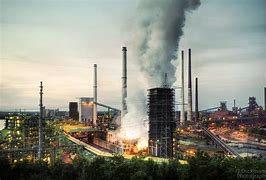-
European steelmaking facing major cost competitiveness challenges in push to decarbonise
Date posted:
-
-
-
Post Author
Patrick LaveryCombustion Industry News Editor
-

An interesting article in the Financial Times has looked at the future for steelmaking within the European Union as the push to decarbonise continues, with one decade before steel companies need to pay the full cost of carbon permits, which may add up to 30% to production costs at current emissions levels.
Apart from electric arc furnaces, steelmakers are investing in direct reduced iron facilities (and, though the article does not mention it, they are presumably also scoping carbon capture-equipped blast furnaces), expected to be powered by green hydrogen, as a means to avert high carbon costs.
However, this comes with its own price, as well as its own dynamics. While steelmakers will generally look to redevelop existing sites, it may be more advantageous to be located closer to sources of cheaper renewable energy or green hydrogen, so as to benefit from cheaper inputs and become more economically competitive. A recent example has been the finance secured for the H2 Green Steel project in northern Sweden.
While the carbon border adjustment mechanism will (in theory) protect steelmakers within the European Union by imposing taxes on imports of higher-carbon steel, there is still the question of competitiveness of European steelmakers exporting their product outside of Europe. In 2021, around 12.5% of steel made within the EU was exported; some of this may stand up to competition in being specialist or high-specification product, and more in the future may be bought by non-EU customers searching for ‘green’ steel.
However, remaining exports may face increased price pressure, even if some relief may come from other countries imposing their own carbon taxes. EU customers either way look set to pay significantly more for steel.
With the need to finance redevelopments of existing sites to be ready for lower-carbon production of steel, industry is looking to government for subsidies. ArcelorMittal is set to receive €850m in France (which produced 9.1% of EU steel output in 2021), while Thyssenkrupp has secured €2 billion in support in Germany (which produced 26.2% of EU output in 2021).
There are calls for Italian government support for the conversion of the Ilva site to lower-carbon production, too. Between 40-50 megatonnes/annum of direct reduced iron production capacity has been announced within the EU to date, the largest share being in Germany. The future appears a delicate one and EU industry will be hoping that the rest of the world will follow suit in requiring low-carbon steel.
